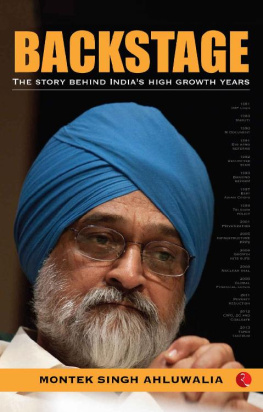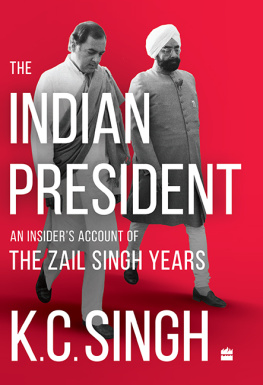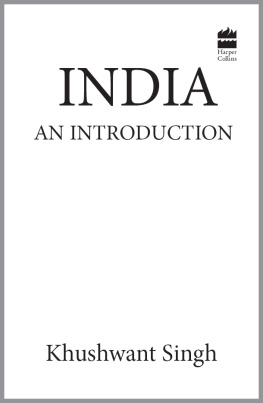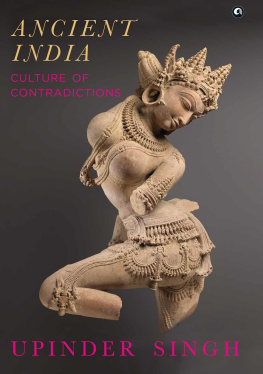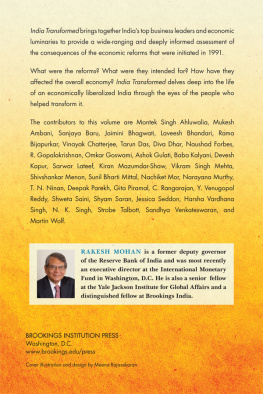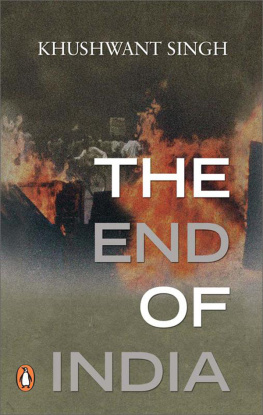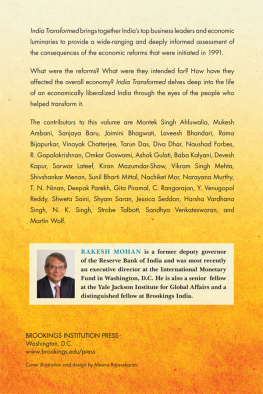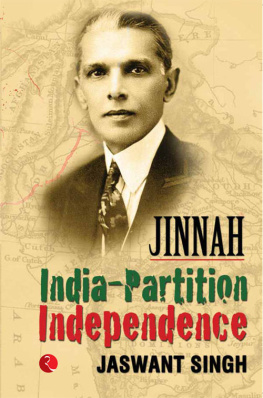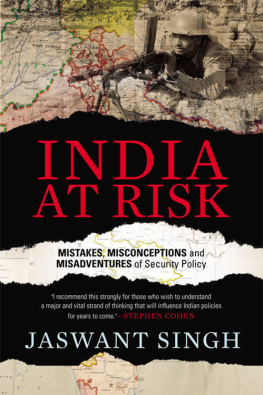Montek Singh Ahluwalia - BACKSTAGE: The Story behind India’s High Growth Years
Here you can read online Montek Singh Ahluwalia - BACKSTAGE: The Story behind India’s High Growth Years full text of the book (entire story) in english for free. Download pdf and epub, get meaning, cover and reviews about this ebook. year: 2020, genre: Politics. Description of the work, (preface) as well as reviews are available. Best literature library LitArk.com created for fans of good reading and offers a wide selection of genres:
Romance novel
Science fiction
Adventure
Detective
Science
History
Home and family
Prose
Art
Politics
Computer
Non-fiction
Religion
Business
Children
Humor
Choose a favorite category and find really read worthwhile books. Enjoy immersion in the world of imagination, feel the emotions of the characters or learn something new for yourself, make an fascinating discovery.
- Book:BACKSTAGE: The Story behind India’s High Growth Years
- Author:
- Genre:
- Year:2020
- Rating:5 / 5
- Favourites:Add to favourites
- Your mark:
- 100
- 1
- 2
- 3
- 4
- 5
BACKSTAGE: The Story behind India’s High Growth Years: summary, description and annotation
We offer to read an annotation, description, summary or preface (depends on what the author of the book "BACKSTAGE: The Story behind India’s High Growth Years" wrote himself). If you haven't found the necessary information about the book — write in the comments, we will try to find it.
BACKSTAGE: The Story behind India’s High Growth Years — read online for free the complete book (whole text) full work
Below is the text of the book, divided by pages. System saving the place of the last page read, allows you to conveniently read the book "BACKSTAGE: The Story behind India’s High Growth Years" online for free, without having to search again every time where you left off. Put a bookmark, and you can go to the page where you finished reading at any time.
Font size:
Interval:
Bookmark:
BACKSTAGE

Published by
Rupa Publications India Pvt. Ltd 2020
7/16, Ansari Road, Daryaganj
New Delhi 110002
Copyright Montek Singh Ahluwalia 2020
The views and opinions expressed in this book are the authors own and the facts are as reported by him which have been verified to the extent possible, and the publishers are not in any way liable for the same.
All rights reserved.
No part of this publication may be reproduced, transmitted, or stored in a retrieval system, in any form or by any means, electronic, mechanical, photocopying, recording or otherwise, without the prior permission of the publisher.
ISBN: 978935333-821-3
First impression 2020
10 9 8 7 6 5 4 3 2 1
The moral right of the author has been asserted.
This book is sold subject to the condition that it shall not, by way of trade or otherwise, be lent, resold, hired out, or otherwise circulated, without the publishers prior consent, in any form of binding or cover other than that in which it is published.

This book is dedicated to Isher,
my life partner and companion
over the past fifty years,
without whose encouragement and
intellectual support
this book would never have been written.
And to our five grandchildren
Veer, Angad, Arjun, Meher and Mahira.
Theirs is the generation that has the
greatest stake in the India story
continuing to move forward.

CONTENTS
PROLOGUE
This book is not a memoir. I was turned off the idea of writing a memoir after I heard someone refer to them as selfies in book form. I present this book to the reader as a travelogue of Indias journey of economic reforms, in which I had the privilege of being an insider for 30 long years. My own story is interwoven with the narrative, but the personal experiences are not the principal focus; they are offered to the reader as an additional insight into what influenced my decisions and, quite possibly, my biases, as I saw Indias growth and development story unfold.
In a country with a history of over 3,000 years, there is always a danger of overestimating the importance of individual events. Nevertheless, I believe the acceleration of economic growth that occurred in India between the early 1990s and the late 2000s was of crucial importance. Indias GDP grew at over 7 per cent per annum in real terms from 199394 to 201112 and poverty declined from 37 per cent in 200405 to 22 per cent in 201112. Only a handful of developing countries have achieved rapid growth of this order over a prolonged period and none of them were large democracies. In this sense, Indias accomplishment during this period is unique in the economic history of developing countries.
few years later, to return home and take up a position as economic advisor in the Ministry of Finance.
By the time I returned to India in 1979, I had acquired extensive experience looking at economies all over the world, the development strategies employed by these countries and how those strategies interacted with political constraints. I looked forward to the opportunity to deploy that experience in shaping Indias economic policy.
of this book is about the decade or so leading up to the economic reforms that were launched in 1991. At the start of this period, India was widely seenby those outside the countryas a laggard in growth, locked into an outdated economic strategy that would not deliver rapid growth. Indian planning had all the right objectives. It recognized the need for rapid growth to raise income levels because mere redistribution of income would not suffice to lift Indians out of poverty. There was some success initiallyin raising the rate of investment, creating an industrial base and improving agricultural productivity; but the model had run out of steam. Crucially, productivity in Indian industry had stagnated.
From the late 1960s through the 70s, the growth performance of the Indian economy deteriorated while other countries in Southeast Asia fared much better. And yet, surprisingly, there were no voices in India advocating or demanding changenot civil servants, not academics, not the press, and not even Indian industry. They all saw that economic performance was not satisfactory but they did not view this as a consequence of the strategy deployed. They knew the public sector was performing very poorly and soaking up a lot of resources instead of generating surpluses for investment, but they saw the solution as pushing the government to somehow make the public sector more efficient. They could see that export performance was consistently falling short of targets, but they did not see the link between poor export performance and the import substitution strategy. That strategy raised the domestic cost structure and created an environment in which businesses would lobby for more protection from import competition rather than strive to lower costs to build export competitiveness.
I was convinced that if we liberalized the economy and gave greater freedom to the private sector, while opening up the economy to import competition, our economic performance would improve. Over the 1980s, some incremental steps were taken to ease controls in some individual areas. In 1990, I got the opportunity to prepare a paper that presented an integrated strategy for reform of fiscal policy, industrial policy, trade policy and exchange rate policy. This paper came to be known as the M Document. It excited a great deal of controversy but I was delighted when much of what it proposed was implemented in the reforms that were started in 1991 under the leadership of Manmohan Singh.
of this book is about the reforms that began in 1991 and continued thereafter. They were remarkable because they dismantled an extremely restrictive policy of controls on industry, foreign trade, foreign investment, the exchange rate and the financial sector. I was commerce secretary and finance secretary in those years and was directly involved in planning and executing those reforms.
The scale of reforms unleashed in 1991 would never have been possible without a cast of characters at both the political and bureaucratic level, all of whom were convinced about the need for change. Among the politicians, the most notable were Prime Minister (PM) P.V. Narasimha Rao, Finance Minister Manmohan Singh and Commerce Minister P. Chidambaram. The United Front government continued the reforms, helped by the continuity provided by Chidambaram under PMs H.D. Deve Gowda and Inder Kumar Gujral. The National Democratic Alliance (NDA) government under PM Atal Bihari Vajpayee, with the support of Yashwant Sinha, Jaswant Singh and Arun Shourie, stuck to the same course. At the bureaucratic level, there were a number of trained economists and highly competent IAS officers who held key positions at different times; A.N. Verma, C. Rangarajan, Bimal Jalan, Nitin Desai, Vijay Kelkar, N.K. Singh, Shankar Acharya, S.S. Tarapore, Y.V. Reddy, D.R. Mehta, S. Ganeshan, Rakesh Mohan, N. Vittal, Jayanta Roy and Gajendra Haldea come readily to mind. They were a well-knit team that knew and respected each other. Domain experts like Raja Chelliah were roped in to provide a medium-term agenda for tax reforms and M. Narasimham to plan reforms of the financial sector.
While all these people made several important contributions to the reform effort in the 1990s, none of it would have happened without the clear and decisive leadership of Manmohan Singh. The success of the reform efforts in the initial years and the atmosphere of frank discussion and mutual respect across political parties helped to create a broader political consensus. This enabled successive governments to continue with these reforms. I remained finance secretary under the United Front government and, initially, under the NDA government until I was shifted out to be a member of the Planning Commission in 1998.
Next pageFont size:
Interval:
Bookmark:
Similar books «BACKSTAGE: The Story behind India’s High Growth Years»
Look at similar books to BACKSTAGE: The Story behind India’s High Growth Years. We have selected literature similar in name and meaning in the hope of providing readers with more options to find new, interesting, not yet read works.
Discussion, reviews of the book BACKSTAGE: The Story behind India’s High Growth Years and just readers' own opinions. Leave your comments, write what you think about the work, its meaning or the main characters. Specify what exactly you liked and what you didn't like, and why you think so.

